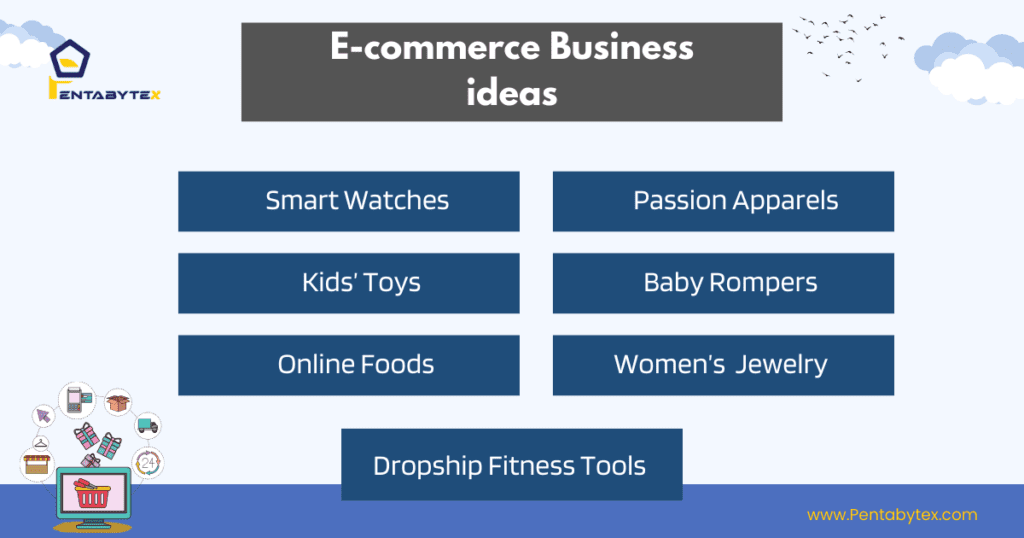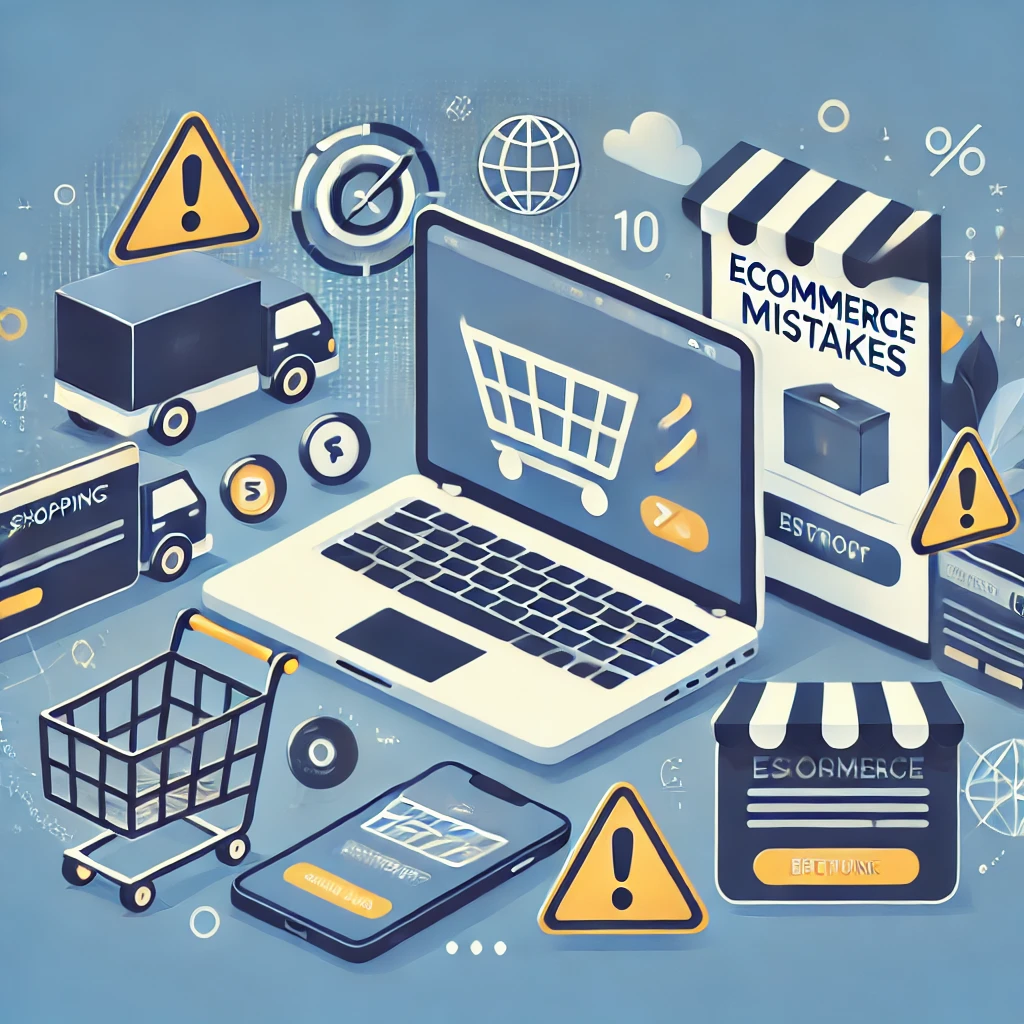Starting an eCommerce business is like starting an exciting journey with endless possibilities. It doesn’t matter whether you’re launching your first online store or moving from a physical shop, the potential for growth in eCommerce is huge. This guide covers all the steps to start an eCommerce business successfully in 2024.
How to Start an eCommerce Business:
Every successful e-commerce business is deeply rooted in market knowledge and your unique business positioning. Here are steps on how to begin:

Identify Your Niche for Your eCommerce Business
To start your eCommerce business, you have to know a niche that goes smoothly with what you want and what the market needs.
- Conduct market research: Utilize Google Trends modeling tools to find out what people are currently interested in.
- Analyze the competition: Analyze your competitors to get their strong points and weak points.
- Understand the audience: Establish what the tastes and habits of your target audience are like.
Determine which products you want to offer before anything else, and use various means, such as interviews or polls, to get feedback from possible customers about them in return.
That feedback helps you to improve your business model while confirming if there’s something to sell or not.
Creating a Business Plan for Your eCommerce Business
To guide you through the process and ensure your online store reaches its objectives, you should start with a solid business plan. Include the following in your plan:
Setting Clear Goals for Your eCommerce Store
To guide your eCommerce company towards growth, you have to set both long-term and short-term objectives. You should also consider creating SMART objectives: specific, measurable, achievable, relevant, and time-bound to ensure that all your efforts are targeted and systematized.
Investopedia offers a helpful guide on setting SMART goals.
Analyzing Your Market and Revenue Model
This should include identifying your target customers and listing the sources of your income, which can be products sold or subscription services, among others.
Financial projections, including initial costs, operational outlays, and revenue predictions, should also feature so that effective budgeting takes place. Check the Forbes article on financial planning for new businesses.
Creating a Marketing Strategy
Incorporate various marketing techniques to develop a way of attracting and keeping customers. For example, think of content marketing, engaging with customers on social media, carrying out email campaigns, as well as turning to paid ads for a better online presence.
For insights into PPC campaigns, check out our guide on PPC Campaign Management Strategies.
Choosing the Right Platform for Your eCommerce Business
Selecting the best eCommerce platform for your online shop is crucial. Take a look at the following possibilities:
Famous Platforms for Starting an eCommerce Business
Shopify: It is a platform that is recommended for most new users due to its simple design. Check out Shopify’s website for more details.
WooCommerce: individuals who already have a website using WordPress can also use this particular kind of hosting service provider to host their online shopping businesses.
BigCommerce: that suits medium- to larger-scale companies where more customized services could be required.
Magento: Ideal for experienced website designers who want specialized features on their sites.
You can try different platforms before deciding which one meets your needs best since they all come with distinct functionalities at no extra cost, as trials and demos are usually offered.
Designing a User-Friendly Website for Your eCommerce Business
A successful eCommerce business is largely dependent on its website. Below are some tips for designing one:
Mobile-friendly site applies
boost your website for mobile as more people are doing their shopping through mobile. A responsive design guarantees that your website will fit every device and screen size.
Building a user-friendly layout
Design an interface that enables visitors to navigate smoothly as well as assist them in making purchases. For instance, incorporate slogans like “Buy Now” or “Learn More” and make sure shoppers can easily locate what they need.
Enhancing Visual Appeal and SEO
Invest in creativity and observance of the Search Engine Optimization guidelines, inclusive of the keyword ‘How to Start an eCommerce Business’.
To boost your rankings on search engines and draw more traffic from organic sources, use high-resolution images, captivating product details, and relevant words. For more SEO tips, check out our guide on eCommerce SEO Techniques for 2024.
Payment and Shipping Solutions
Keep in mind the following important elements for a successful shopping experience:
Presenting Variety in Payment Methods
Diverse methods need to be incorporated, such as credit/debit cards, PayPal, digital wallets, etc., so that one can suit various customer preferences while guaranteeing a safe and easily comprehensible payment process.
Working along with trustworthy shipping providers
Settle on reliable carriers and provide various forms of delivery, including easy standard service as well as fast ones. Transparency in terms of freight charges and time of delivery helps manage the expectations of clients.
Transparent Shipping Rates
Openly communicate transportation costs and allow free deliveries to get more clients. When amounts beyond a specified limit are attained, then free transportation can encourage bigger orders.
Implementing Effective Marketing Strategies for Your eCommerce Business
Marketing is the key to driving traffic and increasing sales. Here’s what you should focus on:
Content Marketing and Social Media
Develop relevant materials such as blog posts, videos, infographics, or any other format of your choice that will interest your visitors and in turn boost the number of people who visit your website.
Utilize social networks such as Instagram and Facebook to create a loyal follower base around your company image and market the products you offer. For tips on social media strategies, visit our Social Media Strategy Tips.
Email and Influencer Marketing
For targeted campaigns, use an email list, while influencer collaborations are also effective in extending your scope. It is possible to maintain leads through personalized emails, thereby making them come back to buy from time to time; on the other hand, influencers lend an air of authority and win over potential clients.
Monitoring and Optimizing Your eCommerce Business Performance
Evaluate the performance of your business regularly to highlight areas that require improvement:
Analyzing Website Traffic and Transformations
Using analytics tools, track the behavior of visitors and their conversion rates. Monitor essential metrics such as bounce rate, mean session length, and conversion rate to understand how well your website functions.
Acquisition Costs of Customers Analyzing
Monitor new customer acquisition costs as well as modify the strategies based on them. You should also compare customer acquisition costs with the life span value attributed to them for a viable business system.
KPMG offers insights into customer acquisition cost and lifetime value analysis.
Improve Your eCommerce Business by Enriching Customer Experience
Excellent customer service is the foundation of loyalty.
Multiple Support Channels Offered
The customers’ needs may be addressed efficiently if the support is provided through live chat, e-mail, and telephone. Quick and useful services can help consumers feel more satisfied and return for additional purchases.
Enhancing Feedback and Setting Up Loyalty Programs
Ask for reviews, address problems promptly, and establish a loyalty program that rewards repeat customers. This will increase their experiences and make them champion your brand among friends.
Using Technology and Automation for Your eCommerce Business
Make use of some form of technology and automation to make operations more efficient:
Maintaining Automated Devices
Employ automated devices in inventory management, order processing, or customer communication. Automation saves time, minimizes mistakes, and improves the company’s overall efficiency.
Utilizing AI and Data Analytics
Apply AI-driven tools as well as data analytics to understand customer behavior patterns and enhance marketing plans, respectively. Meanwhile, personalization became another aspect when it comes to AI’s role in customer interactions as well as improving the buying experience itself.
Learn more about how AI can revolutionize your eCommerce business in our article on AI in eCommerce.
Profitable eCommerce Business Ideas

Conclusion
Understanding how to start an eCommerce business needs absolute planning and execution. By following these steps—identifying your niche, selecting the correct platform, crafting a user-friendly website, putting in place payment and shipping arrangements, selecting suitable marketing approaches, and concentrating on customer satisfaction—you’ll be all set for the launch of a winning online shop in 2024.
Embrace technology trends that have been changing over time, thereby keeping up with them as a way of remaining competitive among others in the world of eCommerce.
For more insights into the latest digital marketing strategies that can enhance your eCommerce success, check out our article on Digital Marketing Trends. This article will help you stay updated with emerging trends and techniques that can drive your business forward.







